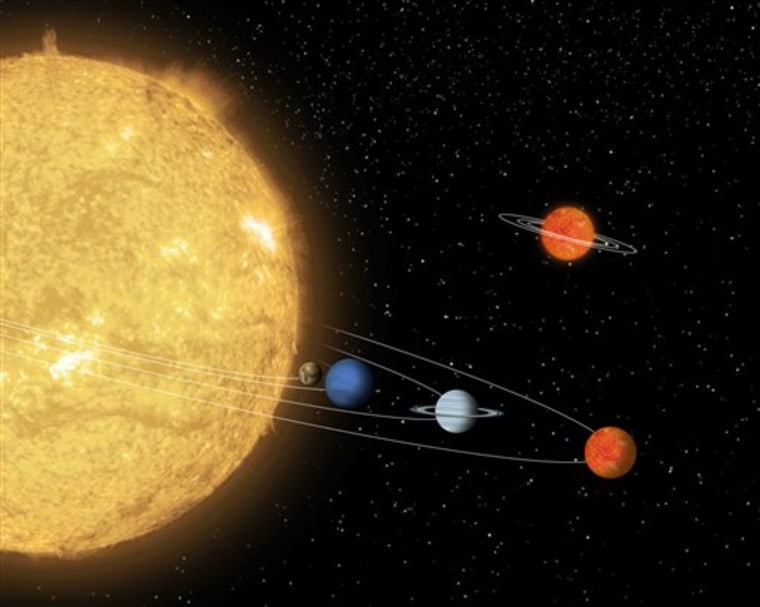Astronomers peering through ground- and space-based telescopes have discovered what they believe is the birth of the smallest known solar system.
Scientists found a tiny brown dwarf — or failed star — less than one hundredth the mass of the sun surrounded by what appears to be a disk of dust and gas.
The brown dwarf — located 500 light years away in the constellation Chamaeleon — appears to be undergoing a planet-forming process that could one day yield a miniature solar system, said Kevin Luhman of Penn State University, who led the discovery.
It's long believed that our solar system came into existence when a huge cloud of gas and dust collapsed to form the sun and planets about 4.5 billion years ago.
The latest finding is intriguing because it's the smallest known brown dwarf to be discovered with planet-forming properties. If the disk forms planets, the resulting solar system will be about 100 times smaller than our system, scientists say.
The discovery was made using NASA's Spitzer Space Telescope and Hubble Space Telescope as well as ground observatories. Results will be published in the Dec. 10 issue of the Astrophysical Journal Letters.
Brown dwarfs, which are bigger than a planet but much smaller than a star, are thought to be balls of gas that failed to collect enough mass to start shining.
